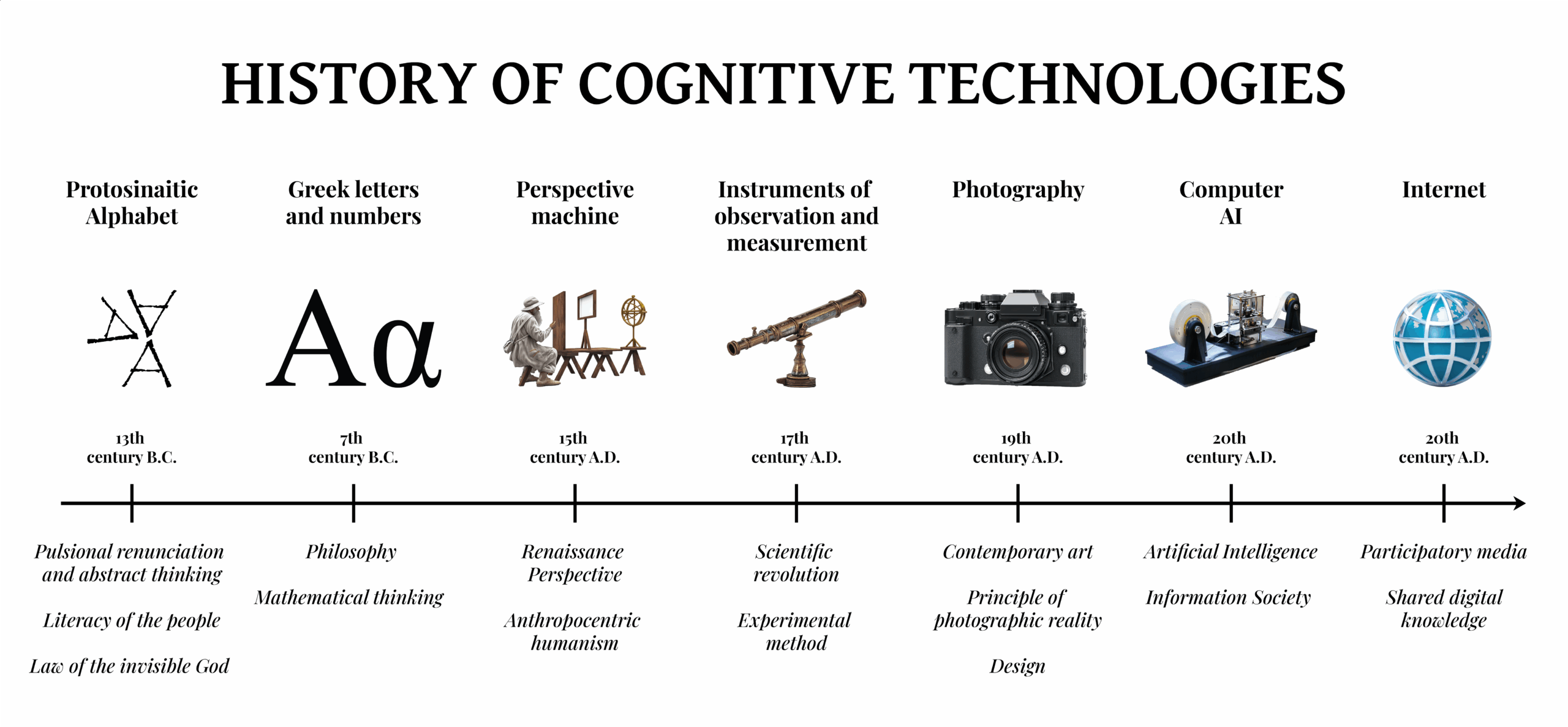Historical precedents can be very useful in understanding how humans will be able to face and meet the challenge with the cognitive technology of Artificial Intelligence, which comes with disturbing aspects that are difficult to interpret and predict.
Let us try to tell a story never entirely told, that of the revolutions in human intelligence triggered by the interaction with cognitive technologies that human intelligence has been able to produce over the millennia. These are in some cases true passages of civilization, while in other situations we can analyze profound cultural transitions in specific fields, such as science or art.
Let’s start with a short list of technologies and their evolutionary leaps:
| Cognitive Technology | Cognitive Revolution | Epoch | Mutation genes |
|---|---|---|---|
| Protosinaitic Alphabet | Drive renunciation and abstract thought | 13th century B.C. | Moses |
| Greek letters and numbers | Philosophical writing | 7th century BC. | Presocratic philosophers |
| Prospectograph | Renaissance perspective | 15th century CE. | Brunelleschi and Alberti |
| Moveable type printing | Freedom of printing | 15th century CE. | Gutenberg |
| Instruments of observation and measurement | Scientific revolution | 17th century CE. | Galileo, Newton |
| Photography | Contemporary art | 19th century CE. | Avant-garde artists |
| Telecommunications and mass media | TV: the multisensory involvement | 20th century CE. | Marconi |
| Internet | Information society | 20th century CE. | Berners-Lee |

The image is released under a Creative Commons Attribution 4.0 International (CC BY 4.0) license. Work by Gualtiero and Roberto Carraro – Homo Extensus. Please quote the authors and link to the original page

